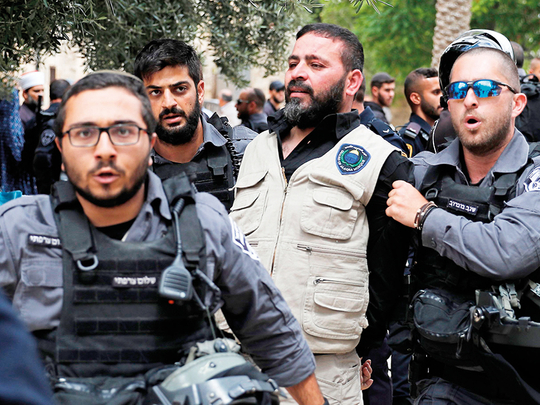
Occupied Jerusalem is at the explosive core of the Israeli-Palestinian conflict. It was partitioned after the Middle East war over Israel’s 1948 creation, with the Israeli regime controlling the west and Jordan the east, including major shrines of Islam, Judaism and Christianity. In 1967, Israel captured east Jerusalem, along with the West Bank and Gaza Strip. It expanded the municipal boundaries into the occupied West Bank, increasing the size of occupied east Jerusalem and annexing it, a move not recognised by most of the international community.
Since the 1990s, the fate of the city has been a core issue in US-brokered talks on setting up a Palestinian state alongside Israel, with the Palestinians seeking occupied east Jerusalem as a capital. Intermittent negotiations have failed, most recently in 2014, and chances of resuming them are slim. Israeli Prime Minister Benjamin Netanyahu says he won’t give up any part of the city, while Palestinian President Mahmoud Abbas says Trump’s policy shift on occupied Jerusalem disqualified the US as a broker.
Population
In 2016, occupied Jerusalem was home to almost 883,000 people, 62 per cent of them Jews and non-Arabs and 38 per cent Palestinians. The Arab share of the population has grown steadily since 1967, in part because of a higher birth rate. After 1967, Israel built a ring of colony neighbourhoods in occupied east Jerusalem to deepen its hold over the annexed area, where 207,000 Jewish colonists now live.
More than a decade ago, the Israeli regime built a West Bank separation wall that slices through Arab neighbourhoods in occupied east Jerusalem, forcing tens of thousands of Palestinian residents of the city to cross crowded checkpoints to get to downtown areas.
US policy
Most of the international community, including the US, did not recognise Israel’s 1967 annexation of east Jerusalem. The prevailing view, including by the European Union, is that the fate of the city must be determined in negotiations.
In 1995, the US Congress passed a bill with bipartisan support that recognised occupied Jerusalem as Israel’s capital and required the US Embassy to move there. Until now, presidents had signed a waiver every six months that put off the move on security grounds.
The US stance on occupied east Jerusalem now has been thrown into confusion.
Embassy’s location
In their 1949 armistice agreement, Israel and Jordan drew a ‘Green Line’ of partition through the city. In one area of occupied southeastern Jerusalem, they couldn’t agree and created a pentagon-shaped ‘area between the lines.’
The new embassy will operate temporarily from the US consulate compound, which is partially located in the old no-man’s land and partially in occupied west Jerusalem. The UN considers the area of the pentagon to be occupied territory because neither Israeli nor Jordanian forces were supposed to enter it after 1949.












